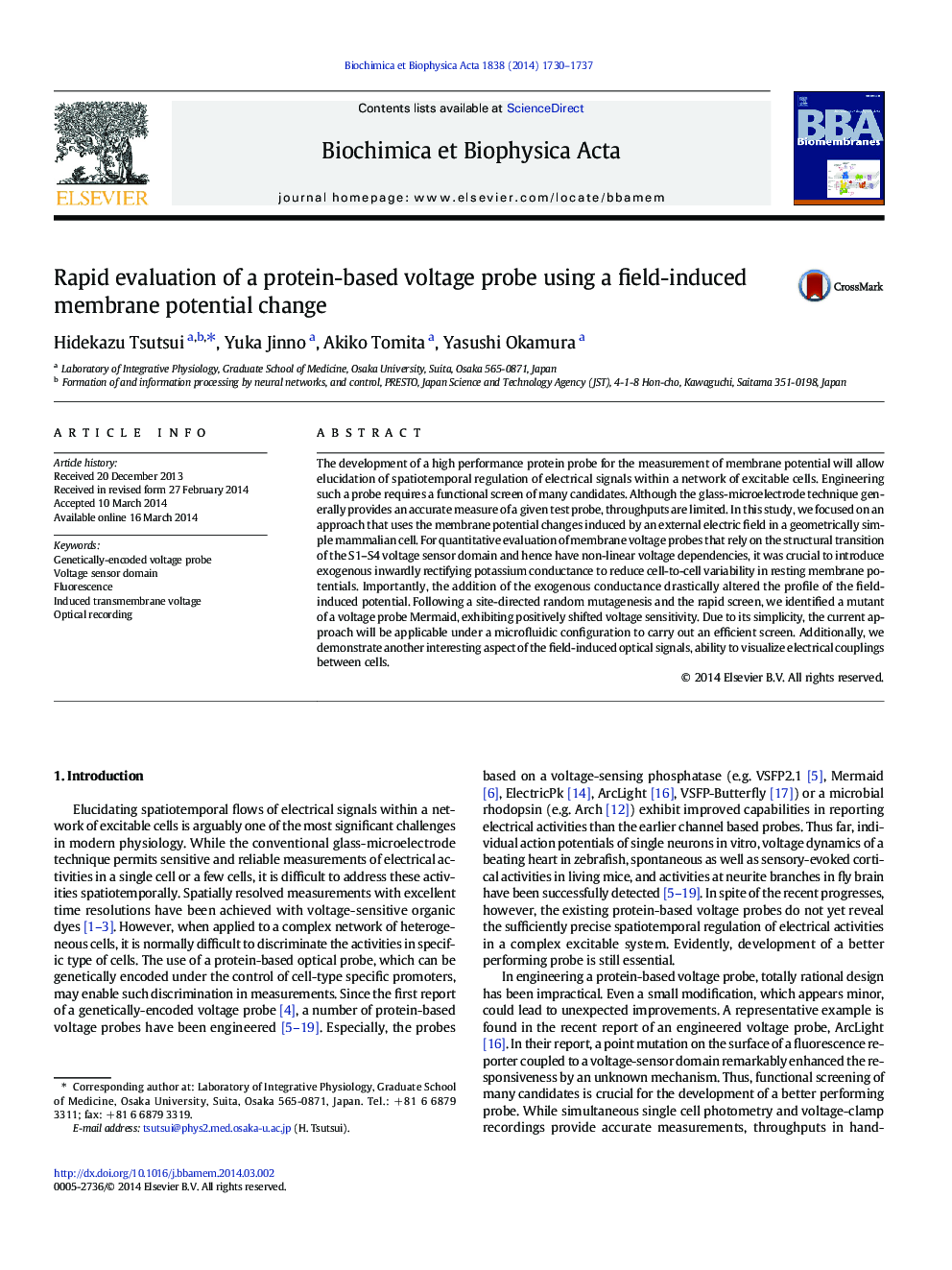| Article ID | Journal | Published Year | Pages | File Type |
|---|---|---|---|---|
| 1944205 | Biochimica et Biophysica Acta (BBA) - Biomembranes | 2014 | 8 Pages |
•External electric-fields can be used to characterize membrane potential probes.•Incorporation of Kir2.1 channels to the host cells was crucial for quantitativity.•Cells expressing Kir2.1 channels show altered field-induced potential changes.•We identified a Mermaid variant with positively-shifted voltage sensitivity.•Field-induced optical response also visualizes a cellular electrical coupling.
The development of a high performance protein probe for the measurement of membrane potential will allow elucidation of spatiotemporal regulation of electrical signals within a network of excitable cells. Engineering such a probe requires a functional screen of many candidates. Although the glass-microelectrode technique generally provides an accurate measure of a given test probe, throughputs are limited. In this study, we focused on an approach that uses the membrane potential changes induced by an external electric field in a geometrically simple mammalian cell. For quantitative evaluation of membrane voltage probes that rely on the structural transition of the S1–S4 voltage sensor domain and hence have non-linear voltage dependencies, it was crucial to introduce exogenous inwardly rectifying potassium conductance to reduce cell-to-cell variability in resting membrane potentials. Importantly, the addition of the exogenous conductance drastically altered the profile of the field-induced potential. Following a site-directed random mutagenesis and the rapid screen, we identified a mutant of a voltage probe Mermaid, exhibiting positively shifted voltage sensitivity. Due to its simplicity, the current approach will be applicable under a microfluidic configuration to carry out an efficient screen. Additionally, we demonstrate another interesting aspect of the field-induced optical signals, ability to visualize electrical couplings between cells.
Graphical abstractFigure optionsDownload full-size imageDownload high-quality image (126 K)Download as PowerPoint slide
